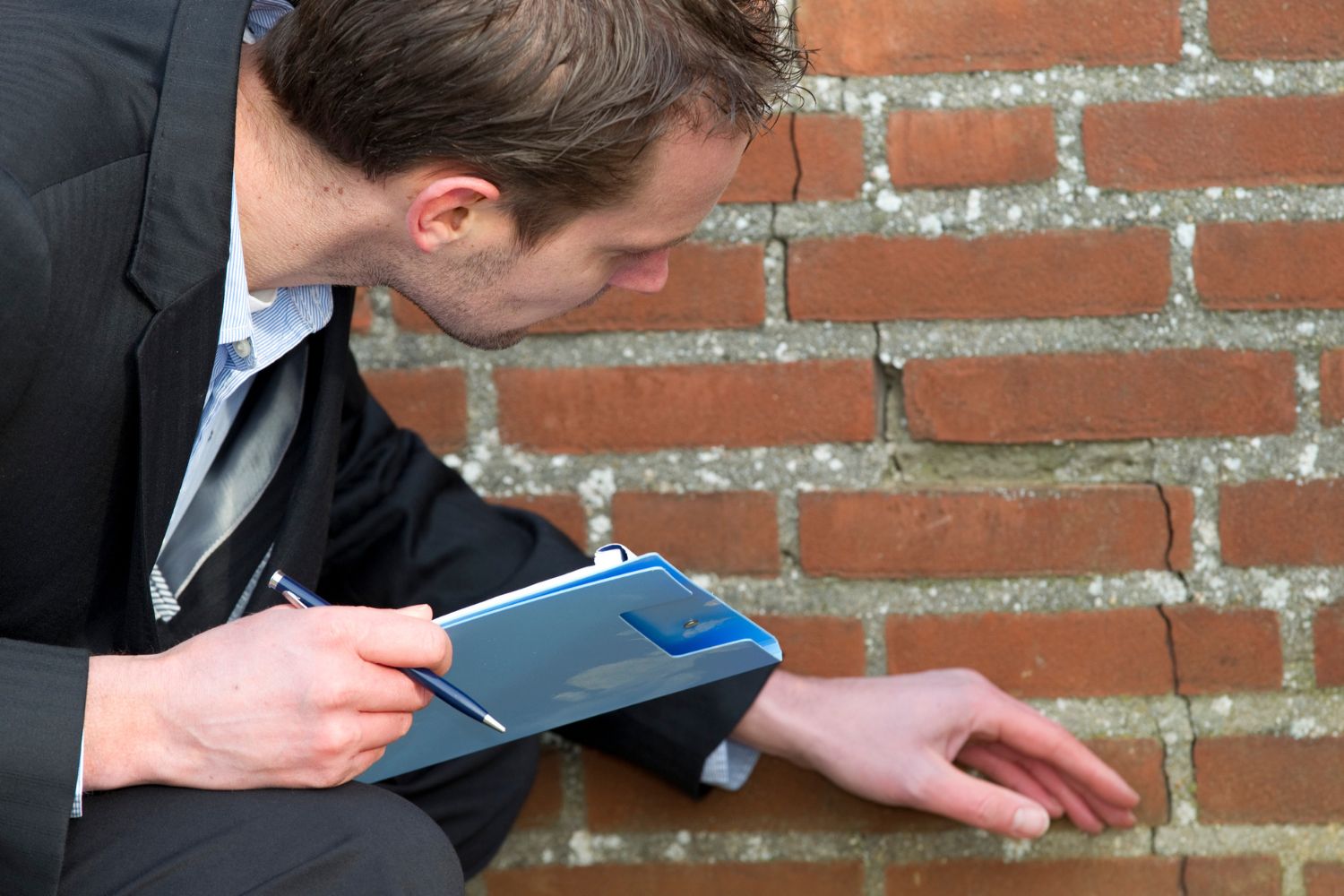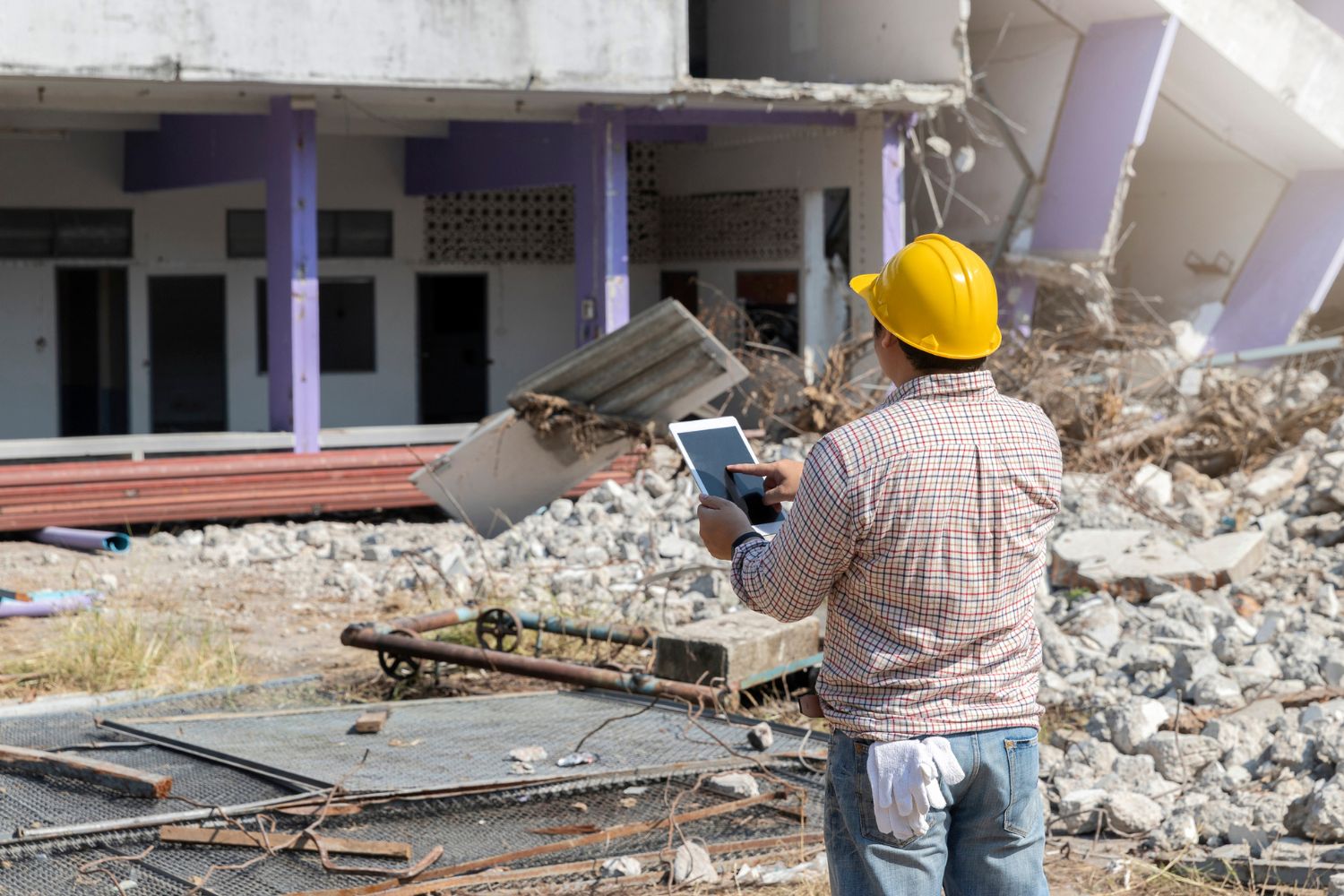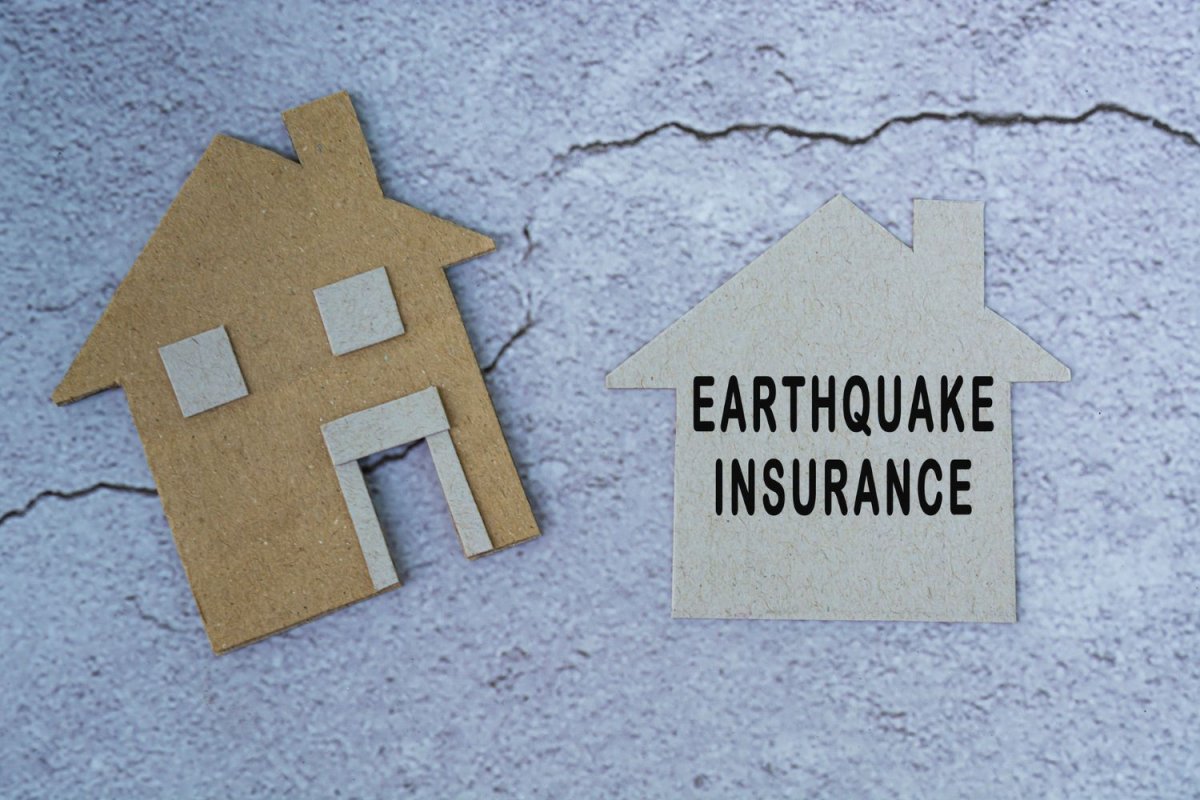We may earn revenue from the products available on this page and participate in affiliate programs. Learn More ›
Highlights
- The national average cost of earthquake insurance coverage is between $800 and $5,000 per year.
- The exact cost of coverage depends on numerous factors, including the policyholder’s location, the earthquake risk level, the type and amount of coverage chosen, and the materials used to build the home.
- There are four main types of earthquake insurance coverage: dwelling, other structures, personal property, and loss of use.
- Earthquake insurance coverage is beneficial for homeowners and renters living in high-risk areas such as California, Oregon, and Washington, but it may not be necessary for those who live in lower-risk regions.
Most people have heard of homeowners, renters, and flood insurance, but earthquake insurance is a lesser-known type of coverage. While earthquake insurance may not be necessary for a homeowner or renter living in the Midwest, where the risk of an earthquake is low, it can help protect policyholders in high-risk areas, such as the West Coast, from financial turmoil following a damaging earthquake.
How much is earthquake insurance? On average, earthquake insurance costs between $800 and $5,000 per year nationally. Premiums are typically higher than the average cost in areas with regular seismic activity, such as California, and lower in areas that don’t typically see earthquakes, such as Ohio. The exact cost of coverage depends on several factors, all of which are discussed in this cost guide. The guide will also explain the different types of coverage, offer some ways for policyholders to save, and address some commonly asked questions about earthquake insurance.

Factors in Calculating Earthquake Insurance Cost
As with any type of insurance coverage, the exact cost of insurance for earthquakes can depend on many factors. Some of the main factors include the risk level in the customer’s geographic location, the type and amount of coverage chosen, and the structure of the home, though there are many other factors that can also affect the cost.
Earthquake Risk Level
Is earthquake insurance expensive? Generally speaking, the higher the earthquake risk in a policyholder’s area, the higher their cost for earthquake insurance coverage. That’s because homeowners and renters who live in areas that have frequent seismic activity are more likely to file a claim on their earthquake insurance policy than those who live in low-risk areas. This makes it more expensive for the insurance company to cover policyholders in high-risk areas, and so they charge a higher rate to help make up for the higher cost of coverage.
In general, homes in California, Washington, Oregon, Nevada, Alaska, and Hawaii are considered by the U.S. Geological Society (USGS) to be at a higher risk of earthquake damage than other areas. However, earthquakes can happen in other states as well. Customers can check the USGS’s website to determine the exact risk in their area.
Coverage Type
There are four types of coverage a policyholder can select when taking out an earthquake insurance policy: dwelling, other structures, personal property, and loss of use. A homeowner who takes out an earthquake insurance policy will likely want to make sure they are covered for all four, whereas a renter will need to look only at personal property and loss of use coverage. Each coverage type is explained in more detail in a later section, but the following are some basic explanations of the different kinds of coverage.
- Dwelling coverage protects the home itself, as well as any attached structures. If the home, foundation, or concrete slab sustains damage from an earthquake, the homeowner would file a claim under their dwelling coverage.
- Other structures coverage is designed for unattached structures, such as sheds, garden fences, and detached garages.
- Personal property coverage helps replace any of the policyholder’s items that are damaged or destroyed by an earthquake. Because certain valuable personal property may not be fully covered, the policyholder may want to take out additional coverage for scheduled items like artwork, jewelry, or sports equipment to ensure they are covered in case of an earthquake.
- Loss of use coverage helps the policyholder cover any additional living expenses incurred if they are required to move out of the home while repairs are made.
Coverage Amount
When taking out an earthquake insurance policy, customers can choose the amount of coverage they need. In general, they’ll want to make sure they have enough dwelling coverage to pay to rebuild the home if it’s leveled and enough personal property coverage to replace their belongings if they’re destroyed by seismic activity.
Typically, a large home located in an expensive area such as a city will need more coverage than a small home in a less expensive, rural area. Likewise, a policyholder with a lot of high-quality belongings will want to have more personal property coverage than a policyholder with minimal, low-cost belongings. The higher the coverage amount, the more likely the policyholder will be to pay for earthquake insurance coverage.
Insurance Company
The exact cost of earthquake insurance coverage can depend on the insurance company. A homeowner or renter may find that they get very different quotes from different insurers, which is why it’s important to get several quotes and compare them to find the one that best fits the customer’s needs and budget. The best homeowners insurance companies can provide quotes online, though customers may need to call or visit an agent to get a specific quote for earthquake coverage.
Building Materials
Homes that are built from certain materials have a higher risk of earthquake damage. For example, a home that is built from stone or brick is likely to sustain greater damage than one made from wood or concrete. In addition, a home with an old or crumbling concrete slab will likely fare worse in an earthquake than one with a reinforced concrete foundation. As a result, the home’s building materials will affect earthquake insurance costs.
Foundation Type
There are numerous types of foundation a home can be built upon, and the type of foundation can affect the home’s ability to withstand an earthquake. For example, a raised foundation means the home has more elasticity, which would allow it to move during a seismic event and sustain less damage than a home built on a basement or concrete slab. Policyholders whose homes are built on a raised foundation will likely pay less for earthquake insurance.
Home Age
In areas where earthquakes are common, there are often specific seismic building codes in place. However, homes that were built before these codes were introduced are often not retrofitted to be better able to withstand seismic activity. If an older home is not bolted to its foundation or its crawl space walls have not had bracing installed, for example, an insurance company may charge a much higher premium—or, in some cases, refuse coverage entirely unless the homeowner can bring their home up to code.
Soil Type
The type of soil the home is built on can also affect the exact cost of earthquake insurance. A rock or clay surface is more rigid than a sandier soil surface. If a home is built on a rigid surface, it will lack elasticity when an earthquake hits and therefore be more prone to damage. A home built on a sandy surface, however, will be more likely to come out of an earthquake with more minor damage due to its elasticity. Prices for earthquake coverage will reflect these differences in soil types.
Standalone Insurance vs. Endorsement
A policyholder may be able to get an earthquake endorsement added to their current homeowners or renters insurance policy. This can be a cheaper option for policyholders on a budget, though an endorsement generally won’t offer as much coverage as a standalone insurance policy.
If a policyholder prefers to take out a standalone earthquake insurance policy, they will likely be covered more fully if an earthquake hits their home, but that coverage can come at a higher cost.
Deductible
Just like homeowners and renters insurance policies, an earthquake insurance policy has a deductible that reflects the portion of an approved claim a policyholder will be required to pay. Some insurance deductibles are set at a certain dollar amount, but an earthquake insurance deductible is typically set at a certain percentage of the coverage amount, generally between 5 percent and 25 percent. If a policyholder files claims under the dwelling and personal property portion of their coverage, they will likely need to pay two separate deductibles.
If a policyholder chooses a low deductible, they’ll receive more money from their insurer when they make a claim following an earthquake. However, that low deductible means the policyholder’s premium will be higher. Choosing a high deductible, on the other hand, means paying a lower annual premium but receiving a lower payout when a claim is approved—this, in turn, means the policyholder will need to pay more money out of pocket in the event of earthquake damage.
Policyholders can consider the following example of a $200,000 claim when choosing the right deductible amount for their earthquake insurance policy.
| Deductible Amount | Insurer’s Responsibility | Policyholder’s Responsibility |
| 5 percent | $190,000 | $10,000 |
| 10 percent | $180,000 | $20,000 |
| 15 percent | $170,000 | $30,000 |
| 20 percent | $160,000 | $40,000 |
| 25 percent | $150,000 | $50,000 |
While a high deductible and low premium may be a tempting prospect, policyholders will want to take their financial situation into account when deciding on a deductible. Choosing a 25 percent deductible will save them money on premiums, but if they don’t have a quarter of the claim amount in savings, they may be unable to fully rebuild their home or replace their belongings after an earthquake causes major damage.
Geographic Location
The cost of earthquake insurance can vary based on the policyholder’s location. For example, the risk of an earthquake hitting Wisconsin is very low, so an earthquake policy in that state would likely cost much less than the average range of $800 to $5,000. However, there are several fault lines on the West Coast, including the famous San Andreas Fault, which increase the risk of serious damage from seismic activity in these areas; as a result, earthquake insurance will cost more.
Even within the same state, the cost of coverage can vary dramatically. Customers can consider the following rates for earthquake insurance coverage in several different California cities for reference.
| California City | Annual Rate Per $1,000 of Coverage |
| Yuba City | $2.47 |
| San Diego | $2.90 |
| Napa | $3.06 |
| Santa Barbara | $3.31 |
| West Hollywood | $3.37 |
| Long Beach | $4.11 |
| San Francisco (Nob Hill) | $4.58 |
| Calexico | $5.82 |
| Alameda | $6.47 |
Using these figures, a policy with $500,000 of coverage in Yuba City would cost $1,235 annually, while a policy with the same coverage in Alameda would cost $3,235. Alameda is located in the San Francisco Bay area, where the risk of an earthquake is high, while Yuba City is located inland, north of Sacramento, and has a lower risk of severe damage. California residents can get an earthquake insurance policy through the California Earthquake Authority (CEA), and the best homeowners insurance companies in California may offer earthquake endorsements.
Discounts
When shopping for an earthquake insurance policy, customers will want to ask their insurer about any available discounts that could lower their premiums. Policyholders who are adding an earthquake endorsement to their homeowners insurance policy may be able to take advantage of one of the best home and auto insurance bundles to lower their overall insurance cost and make earthquake coverage more affordable. Additionally, some insurers may offer discounts for homes built on a slab or with a reinforced crawl space, since these structures are more likely to hold up during an earthquake.
Policies provided by the California Earthquake Authority (CEA) also offer discounts for homes that are retrofitted for earthquakes—the discount ranges from 10 percent to 25 percent depending on the home’s age and the type of foundation it is built upon. The CEA estimates that it costs between $3,000 and $7,000 for earthquake retrofitting, depending on the level of work needed.
Types of Earthquake Insurance Coverage
Earthquake insurance is designed to protect homeowners and renters if their home sustains damage from a seismic event, but there are several different types of coverage that may or may not be necessary for each policyholder. The main types of earthquake insurance coverage include dwelling, other structures, personal property, and loss of use. The details below show what each type of insurance covers and who is eligible for coverage.
| Dwelling | Other Structures | Personal Property | Loss of Use |
| Covers the main home and attached structures such as garages and decks | Covers detached structures such as sheds and fences | Covers personal items in the home such as clothes and electronics | Covers additional living expenses if temporary relocation is required |
| Does not cover vehicles, pools, flooding | Does not cover landscaping damage | Does not cover valuable or collectible personal property | Does not cover regular living expenses |
| For homeowners only | For homeowners only | For homeowners and renters | For homeowners and renters |
Dwelling
Earthquake dwelling coverage helps pay to repair or rebuild a home that sustains damage from a seismic event. It also covers any attached structures, such as an attached garage, deck, or porch. Homeowners will want to make sure that they have enough dwelling coverage to pay to rebuild their home to the original specifications; a policyholder without sufficient dwelling coverage may need to choose between rebuilding a smaller home or paying more out of pocket to rebuild the same size home following an earthquake.
Other Structures
Other structures coverage is typically optional, since not all customers require this type of coverage. It’s designed to cover structures that are not attached to the main dwelling, such as sheds, detached garages, and fences. A homeowner who has these structures on their property will want to strongly consider adding other structures coverage to their earthquake insurance policy.
Personal Property
Personal property coverage pays to repair or replace damaged or destroyed items in the home, such as clothing, televisions, and other electronics. This type of coverage is highly recommended for both homeowners and renters. It’s generally advised that policyholders take an inventory of their personal belongings to get a good idea of how much it would cost to replace them. It’s not uncommon for policyholders to underestimate how much their personal property is worth, so taking an inventory can help ensure they take out enough coverage through their earthquake insurance policy.
Loss of Use
Loss of use coverage, also called additional living expenses coverage, is designed to help pay for costs such as hotel or short-term rental fees, travel expenses, and meals out, above and beyond the policyholder’s typical living expenses. This is an important type of coverage for an earthquake policy, since a homeowner or renter may be required to evacuate from their home or relocate temporarily while repairs are being made following an approved claim.

Do I Need Earthquake Insurance?
In addition to purchasing one of the best earthquake kits for emergency preparedness, homeowners and renters may wonder whether earthquake insurance is worth it. In general, this type of insurance coverage is recommended for those who live in areas with frequent seismic activity or close to active fault lines. Additionally, those without sufficient savings to replace or rebuild their home and belongings will want to give serious consideration to this type of coverage.
Frequency of Earthquake Activity
Homeowners or renters who live in an area that sees frequent seismic activity are strongly advised to take out an earthquake insurance policy. An earthquake can be a catastrophic event, and without insurance a homeowner or renter would likely not be able to replace their home and/or belongings. Earthquake insurance can be well worth the cost, as it will help pay to rebuild and replace the home and belongings; the policyholder is responsible only for the deductible amount.
Proximity to Active Fault Lines
California is known as being a hotbed for seismic activity thanks to several active fault lines, including the San Andreas Fault. In general, those who live within 30 miles of an active fault line are strongly advised to take out earthquake insurance coverage. But there are other fault lines in the U.S. besides those in California; the Cascadia Subduction Zone is located off the coast of Oregon and Washington, and the New Madrid Seismic Zone spans several states, including Arkansas, Kentucky, Missouri, and Tennessee.
Insufficient Savings
A homeowner with a large savings account may be able to pay out of pocket to rebuild their home following an earthquake, but most homeowners don’t have those kinds of savings. Since an earthquake can be devastating to the structural integrity of a home, a homeowner can be left with a huge repair bill after an earthquake and may be unable to pay it.
Similarly, a renter with a decent amount of savings may be able to pay to replace their damaged or destroyed belongings following an earthquake, but many renters (and homeowners) underestimate the total value of their personal property and may find it difficult to replace everything out of pocket.
Earthquake insurance can help both homeowners and renters who don’t have enough money saved up for these expenses. No matter how unlikely an earthquake is to occur, it only takes a few minutes for a home to be destroyed by a strong quake, and without insurance the homeowner or renter will be on their own when it comes to paying for repairs.
How to Save Money on Earthquake Insurance Cost
Earthquake insurance isn’t cheap, but it can pay for itself if you’re affected by a seismic event. Some insurers, including those who work with the CEA, offer discounts for homes that have received a seismic retrofit to help the structure better withstand earthquake damage. The following are some projects homeowners can complete to acquire this discount.
- Secure your foundation. If a home isn’t firmly attached to its foundation, it’s more likely to sustain severe damage during an earthquake.
- Bolster your crawl space walls. Bolstered walls around a crawl space make it less likely that the home will collapse in on itself during strong seismic activity.
- Reinforce your chimney and walls. A chimney and masonry walls can be made to better withstand an earthquake if they are reinforced.
- Add automatic gas shut-off valves. An earthquake can cause a dangerous gas leak; adding an automatic shut-off valve can help prevent this and may qualify you for a discount.
- Attach your water heater to a wall. A loose water heater is a major hazard during an earthquake. Securing it to a wall can prevent disaster and could score you a discount on your premiums.
In addition to these CEA discounts, there may be other ways for policyholders to save money on their earthquake insurance, such as the following.
- Ask about discounts. These may vary among earthquake insurance companies, so make sure you ask your earthquake insurance agent about available discounts to see if you qualify.
- Bundle your policies. Depending on your insurer, you may be able to bundle your earthquake insurance policy together with other policies, such as homeowners, renters, or auto insurance.
- Choose a higher deductible. This can help you save money on your insurance premiums, but in return you’ll get a lower payout if you ever need to file a claim.

Questions to Ask About Earthquake Insurance
Before selecting the best earthquake insurance companies for a policyholder, customers are advised to shop around and get an earthquake insurance quote from at least three different providers. When shopping for insurance, customers can ask the following questions.
- Do I need earthquake insurance?
- Can I get an earthquake endorsement added to my current policy, or do I need a stand-alone policy?
- What does a standard policy cover?
- How much coverage do I need?
- What percent of the coverage are your deductibles?
- Am I eligible for any discounts?
- How often will you reassess the rates for my policy?
FAQs
When deciding whether to get earthquake insurance, and where to get it from, customers may have several questions. What follows are some of the most common questions about this type of insurance and their answers to help customers make a decision regarding their coverage.
Q. How much earthquake insurance should I buy?
The exact amount of earthquake insurance coverage needed varies from policyholder to policyholder. Homeowners will want to consider the cost to rebuild their home in the event of an earthquake and make sure they have sufficient coverage. Both homeowners and renters are advised to take an inventory of their personal property to determine its worth and take out enough coverage to replace everything if it is damaged or destroyed. Policyholders can work directly with their insurance agent to determine the sufficient amount of coverage needed.
Q. Does car insurance cover earthquake damage?
An automobile that sustains earthquake damage will typically be covered by car insurance if the policyholder has comprehensive coverage. This type of car insurance covers damage to a vehicle that is not the result of a collision.
Q. Does earthquake insurance cover tsunamis?
Policyholders who live in coastal areas affected by earthquakes may also need to worry about damage caused by a resulting tsunami. Earthquake insurance may cover some of the damage, but it generally depends on the type of damage. For example, damage caused by a mudslide that occurs as a result of a tsunami may be covered, but flooding damage will not. Customers who live in coastal areas will want to consider flood insurance coverage to protect against this type of damage.
Q. What is the deductible on an earthquake insurance policy?
Earthquake insurance deductibles are typically expressed by a percentage of the total coverage amount rather than a dollar amount. The deductible depends on the insurance company but typically runs between 5 percent and 25 percent.
Q. Is there earthquake insurance for renters?
Yes; renters can take out earthquake insurance coverage for their personal property and for loss of use. Since renters don’t own their home, the landlord’s insurance will cover the dwelling and other structures. It’s generally recommended that renters take an inventory of their personal items to determine how much coverage they need, since renters often underestimate the total value of their personal belongings (as do homeowners). Policyholders can contact the best renters insurance companies to determine whether they offer earthquake endorsements on their renters policies.
Q. Is earthquake insurance worth it?
It depends. If a customer lives near an active fault or in an area that gets a lot of seismic activity, earthquake insurance is likely worth it. But for a customer who lives in an area where earthquakes are extremely rare may choose to skip this type of coverage. In general, those who live near an active fault line are encouraged to look into earthquake insurance coverage. Policyholders seeking coverage will need to work with their agent to fill out their insurance company’s earthquake form in order to get a quote.


